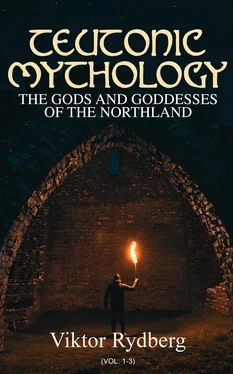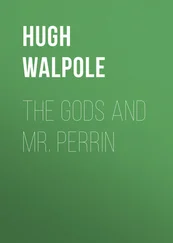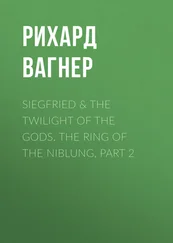It lies outside the limits of the present work to investigate whether these traditions contain any historical facts. There is need of caution in this respect, since facts of history are, as a rule, short-lived among a people that do not keep written annals. The historical songs and traditions of the past which the Scandinavians recorded in the twelfth century do not go further back in time than to the middle of the ninth century, and the oldest were already mixed with stories of the imagination. The Hellenic historical records from a pre-literary time were no older; nor were those of the Romans. The question how far historically important emigrations from the Scandinavian peninsula and Denmark to Germany have taken place should in my opinion be considered entirely independent of the old migration traditions if it is to be based on a solid foundation. If it can be answered in the affirmative, then those immigrations must have been partial returns of an Aryan race which, prior to all records, have spread from the South to the Scandinavian countries. But the migration traditions themselves clearly have their firmest root in myths, and not in historical memories; and at all events are so closely united with the myths, and have been so transformed by song and fancy, that they have become useless for historical purposes. The fact that the sagas preserved to our time make nearly all the most important and most numerous Teutonic tribes which played a part in the destiny of Southern Europe during the Empire emigrants from Scandinavia is calculated to awaken suspicion.
The wide diffusion this belief has had among the Teutons is sufficiently explained by their common mythology—particularly by the myth concerning the earliest age of man or of the Teutonic race. As this work of mine advances, I shall find opportunity of presenting the results of my investigations in regard to this myth. The fragments of it must, so to speak, be exhumed from various mounds, and the proofs that these fragments belong together, and once formed a unit, can only be presented as the investigation progresses. In the division "The Myth concerning the Earliest Period and the Emigrations from the North," I give the preparatory explanation and the general résumé (Nos. 20–43). For the points which cannot there be demonstrated without too long digressions the proofs will be presented in the division "The Myth concerning the Race of Ivalde" (Nos. 96–123).
Table of Contents
THE MYTH CONCERNING THE EARLIEST PERIOD AND THE EMIGRATIONS FROM THE NORTH.
20.
THE CREATION OF MAN. THE PRIMEVAL COUNTRY. SCEF THE BRINGER OF CULTURE.
Table of Contents
The human race, or at least the Teutonic race, springs, according to the myth, from a single pair, and has accordingly had a centre from which their descendants have spread over that world which was embraced by the Teutonic horizon . The story of the creation of this pair has its root in a myth of ancient Aryan origin, according to which the first parents were plants before they became human beings. The Iranian version of the story is preserved in Bundehesh, chap. 15. There it is stated that the first human pair grew at the time of the autumnal equinox in the form of a rheum ribes with a single stalk. After the lapse of fifteen years the bush had put forth fifteen leaves. The man and woman who developed in and with it were closely united, forming one body, so that it could not be seen which one was the man and which one was the woman, and they held their hands close to their ears. Nothing revealed whether the splendour of Ahuramazda—that is to say, the soul—was yet in them or not. Then said Ahuramazda to Mashia (the man) and to Mashiana (the woman): "Be human beings; become the parents of the world!" And from being plants they got the form of human beings, and Ahuramazda urged them to think good thoughts, speak good words and do good deeds. Still, they soon thought an evil thought and became sinners. The rheum ribes from which they sprang had its own origin in seed from a primeval being in human form, Gaya Maretan (Gayo-mert), which was created from perspiration (cp. Vafthrudnersmal, xxxiii. 1–4), but was slain by the evil Angra Mainyu. Bundehesh then gives an account of the first generations following Mashia and Mashiana, and explains how they spread over the earth and became the first parents of the human race.
The Hellenic Aryans have known the myth concerning the origin of man from plants. According to Hesiodus, the men of the third age of the world grew from the ash tree ( ek meleon ); compare the Odyssey , xix, 163.
From this same tree came the first man according to the Teutonic myth. Three asas, mighty and worthy of worship, came to Midgard (at húsi , Völusp., 16; compare Völusp., 4, where Midgard is referred to by the word salr ) and found á landi Ask and Embla. These beings were then "of little might" ( litt megandi ) and "without destiny" ( örlögslausir ); they lacked önd , they lacked ódr , they had no lá or læti or litr goda , but Odin gave them önd , Honor gave them ódr , Loder gave them lá and litr goda . In reference to the meaning of these words I refer my readers to No. 95, simply noting here that litr goda , hitherto defined as "good colour" ( godr litr ), signifies "the appearance (image) of gods." From looking like trees Ask and Embla got the appearance which before them none but the gods had assumed. The Teutons, like the Greeks and Romans, conceived the gods in the image of men.
Odin's words in Havamál, 43, refer to the same myth.
The passage explains that when the Asa-god saw the modesty of the new-made human pair he gave them his own divine garments to cover them. When they found themselves so beautifully adorned it seems to indicate the awakening sense of pride in the first human pair. The words are: "In the field ( velli at ) I gave my clothes to the two wooden men ( tveim tremönnum ). Heroes they seemed to themselves when they got clothes. The naked man is embarrassed."
But the expressions á landi and velli at should be observed. That the trees grew on the ground, and that the acts of creating and clothing took place there is so self-evident that these words would be meaningless if they were not called for by the fact that the authors of these passages in Havamál and Völuspâ had in their minds the ground along the sea , that is, a sea-beach. This is also clear from a tradition given in Gylfaginning, chapter 9, according to which the three asas were walking along the sea-beach ( med sævarströndu ) when they found Ask and Embla, and created of them the first human pair.
Thus the first human pair were created on the beach of an ocean. To which sea can the myth refer? The question does not concern the ancient Aryan time, but the Teutonic antiquity, not Asia, but Europe; and if we furthermore limit it to the Christian era there can be but one answer. Germany was bounded in the days of Tacitus, and long before his time, by Gaul, Rhœtia, and Pannonia on the west and south, by the extensive territories of the Sarmatians and Dacians on the east, and by the ocean on the north. The so-called German Ocean, the North Sea and the Baltic, was then the only body of water within the horizon of the Teutons, the only one which in the days of Jordanes, after the Goths long had ruled north of the Black Sea, was thought to wash the primeval Teutonic strands. The myth must therefore refer to the German Ocean. It is certain that the borders of this ocean where the myth has located the creation of the first human pair, or the first Teutonic pair, was regarded as the centre from which their descendants spread over more and more territory. Where near the North Sea or the Baltic was this centre located?
Читать дальше











